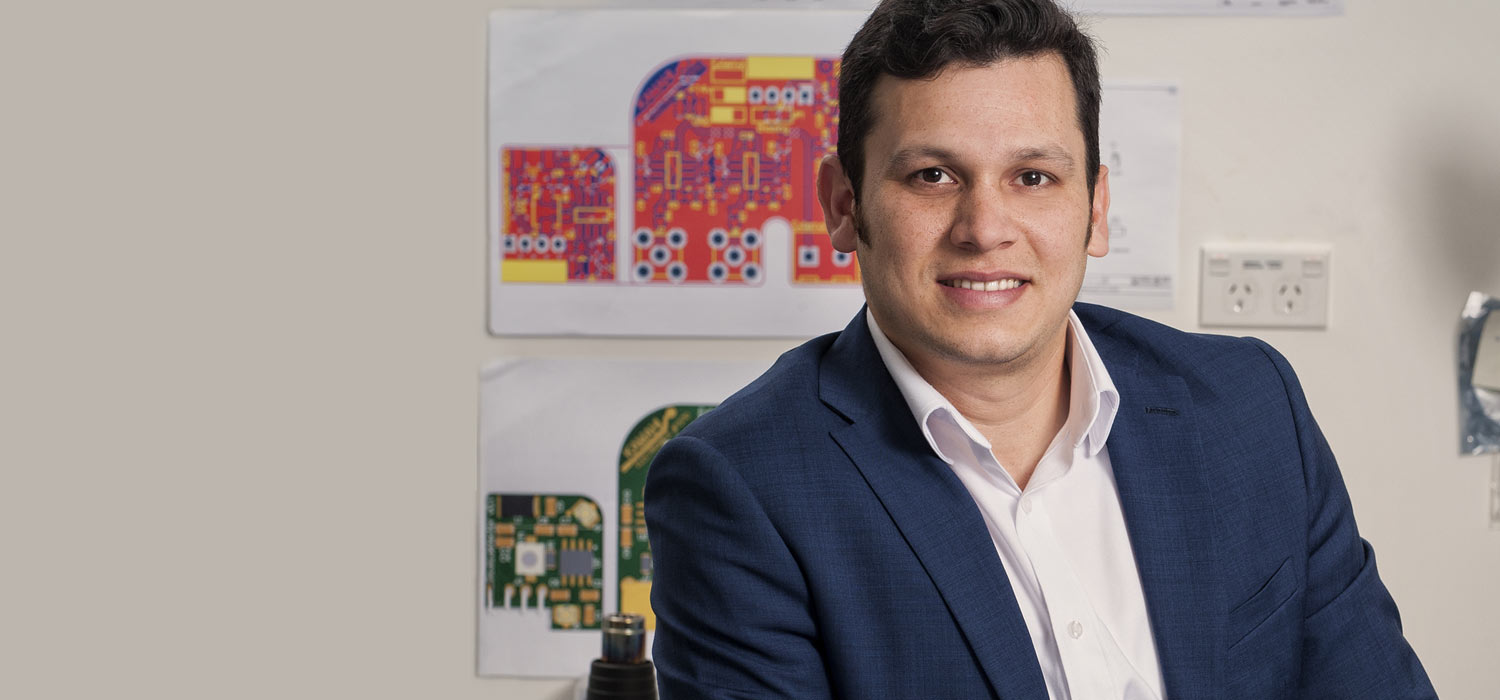Physics labs and lasers might seem light worlds away from mines and meat processing plants, but an ever-growing push for health and safety – particularly in the area of gas detection – has brought these two seemingly separate spheres together.
Photonics Innovations Ltd has grown out of research led by former University of Otago (Physics) staff member Professor Andrew Wilson, who headed a team working at the Jack Dodd Centre, a precursor of the Dodd-Walls Centre for Quantum and Photonic Technologies.
Having realised they could detect gases using laser spectroscopy, they initially looked to commercialise the discovery by developing gas detectors suitable for use in mines. After several years of the project lying dormant, private investment group PowerHouse Ventures came into the picture in 2014 and set about turning the technology into a marketable product.
Photonics Innovations CEO Dr Ojas Mahapatra says that rather than having a large detector designed to pick up four gases, they decided to focus on creating smaller units which sit on the wall and detect one gas at a time. Their first target was ammonia.
"Ammonia is used as a refrigerant in cold stores and food processing companies. Obviously, when you look at the gas detection universe, the biggest gas detection users are oil and gas, mining and metal making. The temptation is to go to that market, but you will find big giants like Honeywell, MSA and Dräger already there, so we decided to find a niche where our products would have unique advantages.
"When we were scoping out the market we found around 50 per cent of cold stores and food processors were not using any ammonia detectors at all. Ammonia is a deadly gas. It can cause food contamination worth hundreds of thousands of dollars and, in the worst cases, people can die."
The main reason for the low compliance was that existing chemical sensors were unreliable. They can deplete, require monthly calibration, and regular false alarms mean lost production time.
Mahapatra says Photonic Innovations' laser detectors have inherent advantages, including accuracy, reliability and much lower maintenance costs.
Photonic Innovations executive chair and PowerHouse investment manager Steve Silvey, a key player in the commercialisation push, says recent changes in health and safety regulations are a big driver, putting responsibility fairly and squarely on company directors and senior management.
Photonic Innovations detectors are now being used by major New Zealand companies such as Silver Fern Farms, Alliance, Ovation, Sealord and Fonterra.
Currently the company is operating out of the Otago's Centre for Innovation and Mahapatra is keen to remain on campus and keep the jobs created there in the region. The enclosure and multi-pass cell are made in Christchurch while the electronic board is made in Dunedin, where the unit is also assembled, calibrated and tested.
"Ammonia is just a stepping stone into the market. The beauty of the technology is we just replace the laser in the device and put in a different laser for a different gas," says Mahapatra.
"We have the ability to do methane, hydrogen sulphide, carbon monoxide – most industrial gases. Every new gas opens up a new industry and revenue stream. So it's a good, scaleable platform."
Although the Otago research group was not the first to show that lasers could identify gases, Silvey says the clever part has been the ability to provide a detector in a shoe-box-sized package.
"Usually, if you wanted to detect ammonia at 50ppm [parts per million], which is alarm threshold, you need to shine a laser across a path length of about 30 metres. But a lot of the pump rooms and places where ammonia is stored are much smaller.
"So the real smarts in the University were about being able to bounce lasers across mirrors to achieve the same path length within a 10cm distance, leaving us with a compact unit that does the same job as a detector spanning 30 metres," he says.
One of the keys has been the ability to bring down the production cost of the multi-pass mirror cell, so they can sell the unit for $6,000 to $10,000. There are cheaper chemical sensors available, but they require expensive maintenance, whereas the laser sensors do not.
Photonic Innovations can also add value through web connectivity – meaning the units are self-testing and can send back health and status reports to a computer dashboard, showing the health of the device and the site. Chemical sensors, by comparison, have to be checked physically.
Silvey sees Photonic Innovations as just a beginning. PowerHouse is already working with Otago Innovation Limited (OIL) to commercialise other intellectual property (IP) and develop a portfolio of businesses.
He values the symbiotic relationship between R&D being done in a world-leading academic environment and feeding into companies that are addressing global problems from Dunedin.
"What we're finding, even from a commercial point-of-view, is that it is better to have a strong research relationship – almost as part of the company's DNA – so that we've always got new knowledge and new opportunities to bring to market. That's something you're not going to get if you cut the umbilical cord and disappear offshore."
At some point Photonic Innovations may be floated but, Silvey says, that is still some time away.
"The fundamental milestone with any start up is when you start selling product. That's validation that you've got something of value. There are a lot of science commercialisation projects that don't get that far."
They have recently signed distributors for both New Zealand and Australia and the plan now is to increase volume and get more presence in the market.


